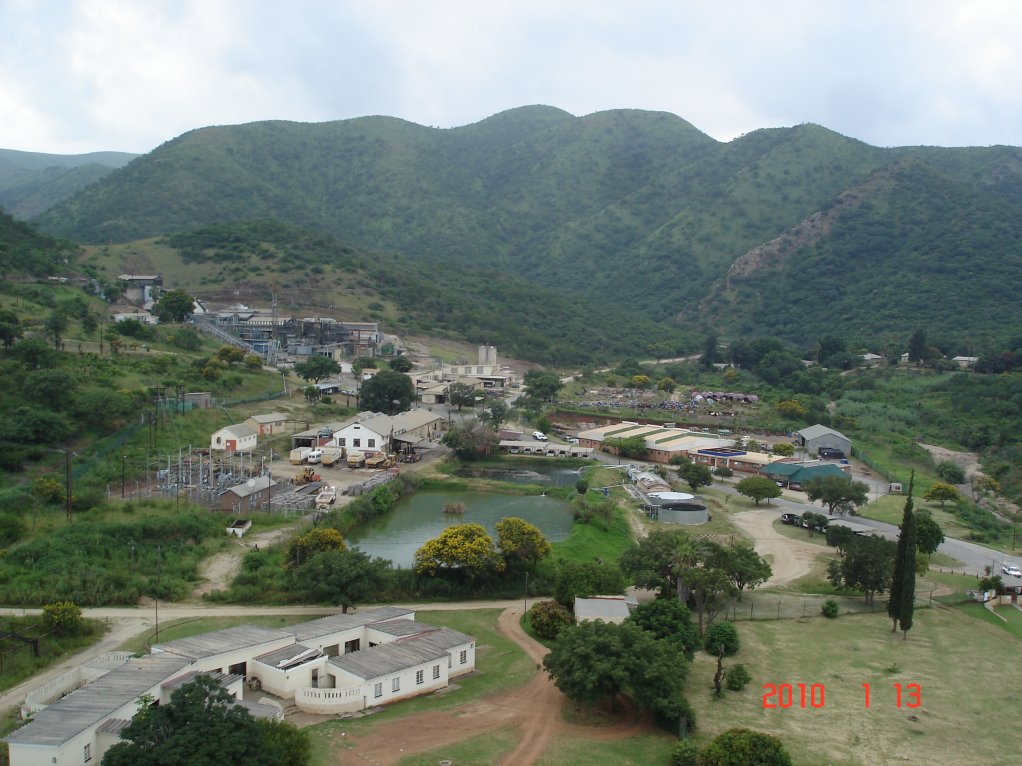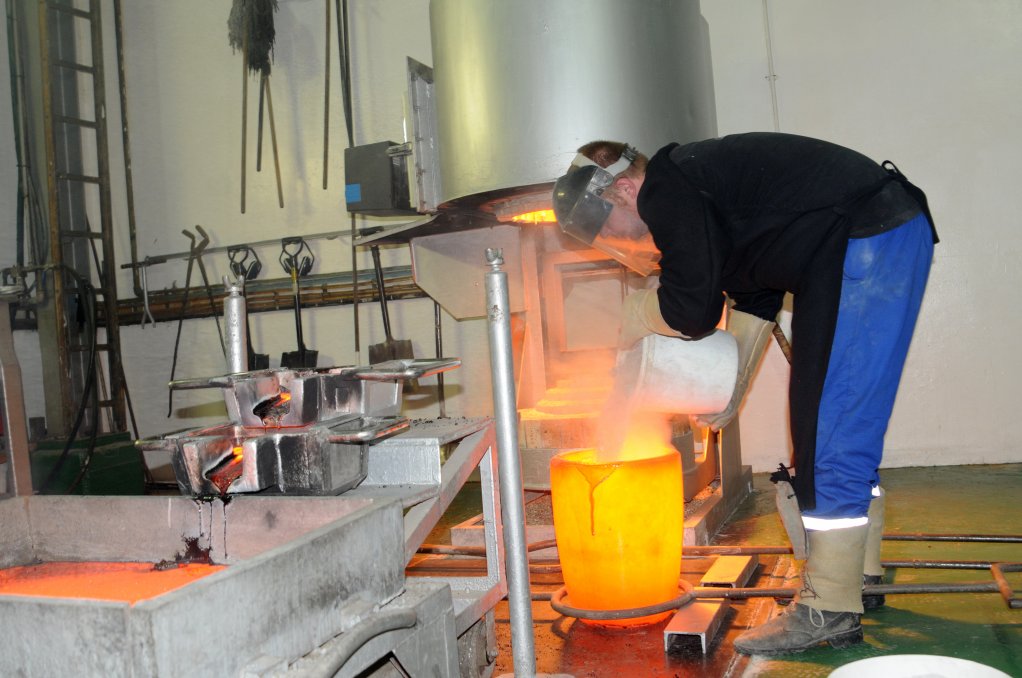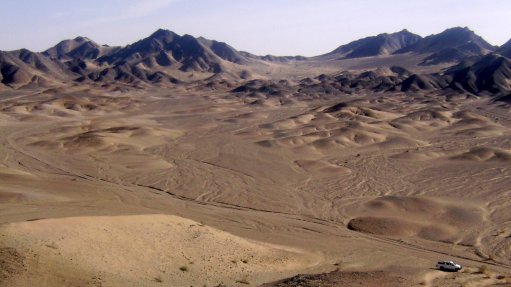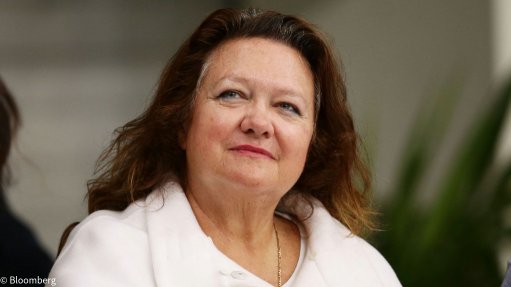Debt-free Pan African thumbing nose at low gold price, planning dividends




Pan African Resources CEO Ron Holding tells Mining Weekly Online’s Martin Creamer that the company’s integration of Evander is complete and the acquisition debt fully paid. Photographs: Duane Daws. Video: Nicholas Boyd. Video Editing: Lionel da Silva.
Pan African CFO Cobus Loots
Photo by Duane Daws
Pan African mine in Barberton
Gold pour at Pan African mine.
JOHANNESBURG (miningweekly.com) – London- and Johannesburg-listed gold-mining company Pan African Resources – which has managed to repay all of the Evander acquisition debt plus R240-million in December dividends – is tackling freshly identified brownfield opportunities in addition to recovering surface gold from tailings at Barberton and being well on the way to doing the same at Evander.
Despite all the financial outflow and the low gold price environment, the Aim- and JSE-listed company has zero debt on its balance sheet and is generating cash and planning future dividend payouts.
The availability of surface ounces, coupled with the reliable underpin of high-margin underground production from the flagship Barberton Mines, is making it easier for Pan African to thumb its nose at the low gold price.
Further developing Evander’s underground mine, which is 2 500 m below surface, would, by contrast, require far more capital investment and time.
But while Barberton’s underground mines continue to be the backbone of the company – in which the black-controlled Shanduka Gold is the biggest single shareholder at 23.87% – gold is now also emerging from the surface material fed into the newly commissioned Barberton Tailings Retreatment Plant (BTRP), at the all-in cost of $750/oz and cash cost of $450/oz.
Moreover, gold recovery from surface material is also near term at Evander, where civil works are under way for the Evander Tailings Retreatment Plant (ETRP), which is scheduled to ramp up to production of 10 000 oz/y of gold from January, retreating 200 000 t a month of tailings with a grade of 0.32 g/t.
The ETRP is being funded by an innovative gold loan from Barclays Absa and is expected to be used as a stepping-stone to a far bigger project at Evander, which will recover gold from the three-million surface tons of tailings that have a grade of 0.29 g/t.
Pan African bought Evander from Harmony last year for R1.5-billion and the acquisition is expected to add 100 000 oz of gold production a year, taking Pan African’s targeted total to 215 000 oz/y.
After going through a high-grade underground cycle at Evander in the first three months of this year, Pan African is currently in the midst of a low-grade sojourn at the Mpumalanga operation, where it intends to turn several brownfield projects to account to offset the impact of low-grade mining.
In addition to the ETRP, it has undertaken a relatively successful vamping and sweeping project for the last nine months at the old gold section project of Evander’s Seven shaft.
“We’ve also got other projects still to be put into the public domain,” Pan African CEO Ron Holding tells Mining Weekly Online in the attached video interview.
The low-grade cycle will continue until January when the high-grade cycle will return.
Despite the low-grade challenge, Pan African is generating unencumbered cash, some of which is expected to find its way to shareholders, who are already in the money after the rights issue.
Shareholders who provided equity capital for the Evander transaction as part of the 200%-oversubscribed rights issue in March 2013 did so at R1.90 a share.
Since then, the share price has risen to R2.60 a share, and shareholders also received a dividend of just over 13c a share in December 2013.
“We raised half of the purchase price of R700m as part of the rights issue, used some internal cash and drew down on a group revolving credit facility to the order of R350-million.
“We’ve been able to repay all of the acquisition debt incurred to fund Evander and also pay out R240-million in dividends,” Pan African CFO Cobus Loots reports in the attached video interview.
“The good thing about it is that we got the full capital for the construction of the plant from the banks and we also did it in a manner that limits its exposure to the gold price.
“Going forward, we’re fairly comfortable that we’ll be producing from that plant at a very competitive cost of between $750/oz and $800/oz.
“Important to mention is that as part of the Evander acquisition we acquired a number of brownfield projects, and if you look at our valuation on a market capitalisation or an enterprise value on a resource and a reserve measure, we’re really very low on that curve in terms of the valuation.
“We see that as a positive, whereby we have to realise more value for shareholders by developing these projects and taking them up the value curve, and that’s something we will continue to do,” says Loots, who also has an eye on potential acquisitions.
“It’s incredible how many projects there are out there that just simply have no funding, or even the possibility of getting funding.
“Even though we’re quite conservative when we look at acquisitions and must be able to see a benefit from day one, we’re viewing the current environment as an opportunity,” Loots adds.
The BTRP is designed to treat tailings from the Barberton flotation plant that have never been in contact with cyanide, whereas ETRP tailings have had cyanide contact in going through carbon-in-pulp and carbon-in-leach (CIL) processes.
At 1.47 g/t, the tailings grade at Barberton is much higher than the Evander grade of 0.3 g/t, but the ETRP will have double the throughput at 200 000 t a month compared with 100 000 t a month at the BTRP.
The ETRP is expected to cost R200-million capital to build whereas the BTRP’s capital cost was R300-million.
They are both CIL processes but gold bars will be produced Barberton and gold slurry at Evander.
Both will be flown by helicopter to the Rand Refinery in Germiston.
Although the BTRP is designed for 100 000 t a month, its current throughput is only 80 000 t a month.
“One of the big positives is the slowdown of the rate of feed into the plant, which has given better recovery, to such a degree that we are recovering more gold than expected,” says Holding.
AMCU MEMBERS
The Association of Mineworkers and Construction Union (AMCU), which is leading the 18-week strike on the platinum belt, has members but not representation at Pan African’s Barberton mines, where the main unions are the National Union of Mineworkers and Uasa.
“We are extremely happy with our relations with the labour force at both operations,” says Holding.
Pan African, which has 6 000 employees, last year concluded a two-year wage agreement of 7.5% and 8%.
While most of the Barberton mines’ employees are from the nearby communities, 60% of Evander’s workforce is made up of migrant employees living in single-roomed hostels on the operation.
ILLEGAL MINING
In 2009, there were 900 illegal miners underground at Pan African’s Barberton mines compared with only three occurrences of far fewer illegal miners last year.
But illegal mining continues to take place, even at Evander.
“We do occasionally have illegal miners identified underground and we also keep an eye on our own employees,” says Holding.
Barberton has a 17-year life-of-mine (LoM) and projects like the Royal Sheba and 11 Block deepening to 1 500 m at Fairview are being developed to ensure that Barberton can continue achieving its high grades.
The drilling of a series of raise boreholes has begun to improve the ventilation conditions underground, with one of the raise boreholes already completed.
Evander’s LoM is 14 years. Mining is currently under way at 24 level, a decline system has been developed to 25 level and development is taking place towards the 25 level reef horizon.
“Once there, we will hole back up into the 24 level reef horizon, which will then create the stopes in the high-grade zone, which we plan to move into towards the end of the year,” Holding explains.
Comments
Press Office
Announcements
What's On
Subscribe to improve your user experience...
Option 1 (equivalent of R125 a month):
Receive a weekly copy of Creamer Media's Engineering News & Mining Weekly magazine
(print copy for those in South Africa and e-magazine for those outside of South Africa)
Receive daily email newsletters
Access to full search results
Access archive of magazine back copies
Access to Projects in Progress
Access to ONE Research Report of your choice in PDF format
Option 2 (equivalent of R375 a month):
All benefits from Option 1
PLUS
Access to Creamer Media's Research Channel Africa for ALL Research Reports, in PDF format, on various industrial and mining sectors
including Electricity; Water; Energy Transition; Hydrogen; Roads, Rail and Ports; Coal; Gold; Platinum; Battery Metals; etc.
Already a subscriber?
Forgotten your password?
Receive weekly copy of Creamer Media's Engineering News & Mining Weekly magazine (print copy for those in South Africa and e-magazine for those outside of South Africa)
➕
Recieve daily email newsletters
➕
Access to full search results
➕
Access archive of magazine back copies
➕
Access to Projects in Progress
➕
Access to ONE Research Report of your choice in PDF format
RESEARCH CHANNEL AFRICA
R4500 (equivalent of R375 a month)
SUBSCRIBEAll benefits from Option 1
➕
Access to Creamer Media's Research Channel Africa for ALL Research Reports on various industrial and mining sectors, in PDF format, including on:
Electricity
➕
Water
➕
Energy Transition
➕
Hydrogen
➕
Roads, Rail and Ports
➕
Coal
➕
Gold
➕
Platinum
➕
Battery Metals
➕
etc.
Receive all benefits from Option 1 or Option 2 delivered to numerous people at your company
➕
Multiple User names and Passwords for simultaneous log-ins
➕
Intranet integration access to all in your organisation






















